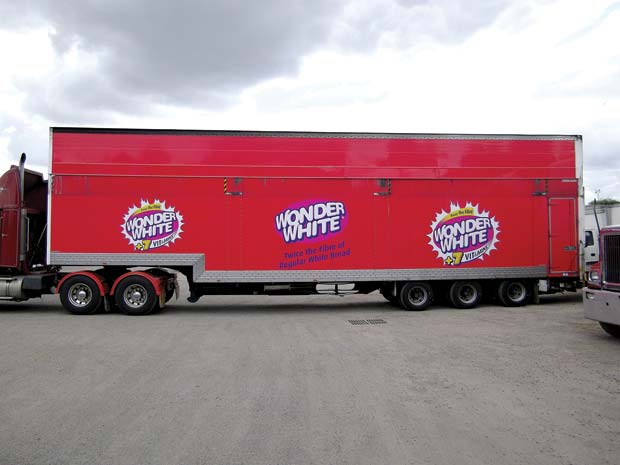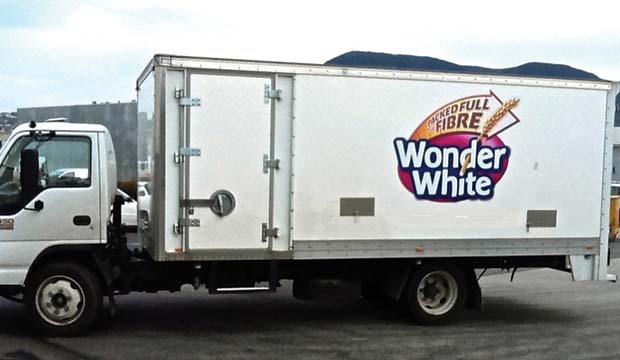Goodman Fielder, Australasia’s leading listed food company, has made far-reaching improvements to the way it distributes bakery products throughout Australia by introducing a package of planning, mapping, routing, scheduling and optimisation resources from a UK company, MapMechanics.

Goodman Fielder’s national supply chain business analyst, Paul March, describes it as “a quantum leap” in helping to control costs: “We’ve been able to optimise the number of trucks, we’ve reduced mileage and fuel costs, and we’ve provided more sustainable earnings for the independent contractors who do our deliveries, reinforcing their commitment to our business. Everybody wins.”
The package supplied by MapMechanics includes several copies of TruckStops, the company’s routing and scheduling solution; GeoConcept, the powerful mapping and geographic information system; OptiSite, MapMechanics’ network planning and modelling system; and NAVTEQ street-level digital mapping.
Paul March emphasises that almost all the interaction with MapMechanics during the supplier selection process and product roll-out was by remote communication.
“Dealing with a supplier on the other side of the world simply hasn’t been an issue for us. The MapMechanics people have been extremely responsive, and ready to take the time difference in their stride. Their digital conferencing and Webex real-time online software demonstrations were incredibly powerful, and proved that the supplier need not actually be on the spot.”
Goodman Fielder is one of Australia’s biggest bakery companies, delivering to 14,000 outlets throughout the country from a nationwide network of depots every day. It manufactures in multiple locations, and supports an intricate network of depot and inter-factory trunking operations and local deliveries.

Uniquely in its market, the company uses independent contractors to do its final deliveries.
Paul March explains. “We wanted to make delivery routes more sustainable for our contractors. But we didn’t have the time or the necessary information to make informed judgements. We needed the right tools to help us make strong commercial decisions.”
Following a pilot exercise in Sydney and Melbourne using a basic in-house mapping application, the company saw that there was potential for major change. It drew up a tender document and invited bids from solution providers.
“MapMechanics came out well ahead with a rating of 96 per cent, and was our unmistakable first choice.”
The company then embarked on a project to streamline contractor operations using GeoConcept with NAVTEQ street-level data. It was able to see customers visually differentiated by size and type and use this ability to map out territories.
It was also able to map traffic flows. Using GeoConcept it was able to re-balance territories, and even out the distribution load among contractors.
These structured delivery lists were passed to TruckStops to verify and produce viable delivery rounds with the best possible mix of customers.
“We were amazed at the results, we could now see cost per drop and make decisions on how best to structure delivery rounds.”

The reports output by both GeoConcept and TruckStops delivered compelling evidence of the savings to be made with these optimised territories.
Paul March points out that the optimum route mix is based not just on journey time, but also on outlet size and type, concession rates and other factors. “Minimising cost doesn’t necessarily equate with minimising geographical spread.
“We were able to set up TruckStops to weight all the main factors, even merchandising times, and come up with an overall best solution.”
He cites an example of a contractor who had been struggling to visit all allocated customers. “We used TruckStops to show him how to manage his trucks and delivery sequence, and he was amazed at how well it worked in real life.”
The MapMechanics package has led to a change in loading practice at some depots. “The linear GANTT charts produced by TruckStops revealed that in some instances the loading time limited delivering capabilities. We’d never been able to see this before.” Decisions can now be made to utilise third-party loading instead of contractors, who are freed up to maximise their time in the marketplace.
“Line-haul” (trunk) movements as well as deliveries have benefited. Goodman Fielder uses large logistics companies to handle this work, and using MapMechanics tools it overlaid their trunk routes on local contractors’ rounds.
“We found that in some cases the line-haul carrier could slot deliveries into an existing journey, freeing the local contractor for other work.”
Paul March sums up: “This exercise has been a true paradigm shift for us. MapMechanics has given us the ability to add science to our decision-making. This has changed our options on how we should operate, and enabled us to make really good commercial decisions.”
MapMechanics
Tel: 020 8568 7000
Email: info@MapMechanics.com




Comments are closed.